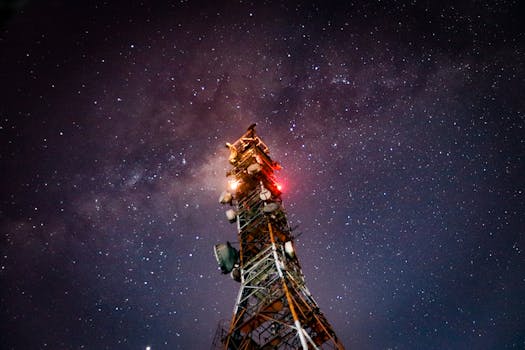
LEO Satellites: Revolutionizing Global Connectivity with Low Earth Orbit Technology
LEO satellites, or Low Earth Orbit satellites, are a type of satellite that orbits the Earth at an altitude of approximately 160 to 2,000 kilometers. This technology has been gaining significant attention in recent years due to its potential to revolutionize global connectivity. With LEO satellites, data transmission speeds are significantly faster, and latency is reduced, making them an attractive option for a wide range of applications, including broadband internet, IoT, and 5G networks.
At the beginning of the LEO satellites era, the focus was on using these satellites for Earth observation, remote sensing, and scientific research. However, with advancements in technology, the focus has shifted towards using LEO satellites for communication purposes. Companies like SpaceX, OneWeb, and Amazon’s Kuiper Systems are launching constellations of LEO satellites to provide global coverage and high-speed internet connectivity.
How LEO Satellites Work
LEO satellites work by transmitting and receiving data to and from Earth-based stations or other satellites. They are designed to be small and lightweight, which makes them cheaper to launch and maintain than traditional geostationary satellites. LEO satellites are also designed to be highly maneuverable, allowing them to adjust their orbit and position as needed.
The signals transmitted by LEO satellites are received by small dishes or antennas on the ground, which are connected to a network of ground stations. These ground stations then forward the data to its final destination, which could be a server, a data center, or another satellite. The use of LEO satellites enables the creation of a network of interconnected satellites that can provide global coverage and high-speed connectivity.
Benefits of LEO Satellites
LEO satellites offer several benefits over traditional satellite technology, including lower latency, higher data transfer speeds, and lower costs. They are also more resistant to interference and can provide more secure connections. Additionally, LEO satellites can be used to provide connectivity in areas where traditional infrastructure is lacking or non-existent, making them an attractive option for remote or underserved communities.
Another significant advantage of LEO satellites is their ability to provide real-time connectivity. With traditional satellites, there is a significant delay between the time data is transmitted and the time it is received. This delay, known as latency, can be as high as 600 milliseconds. In contrast, LEO satellites have a latency of around 20-30 milliseconds, making them ideal for real-time applications such as video conferencing, online gaming, and virtual reality.
Challenges and Limitations
While LEO satellites offer many advantages, there are also several challenges and limitations to their use. One of the main challenges is the high cost of launching and maintaining a constellation of LEO satellites. Additionally, the signals transmitted by LEO satellites can be affected by atmospheric interference, which can impact their performance and reliability.
Another significant challenge is the issue of space debris. With thousands of LEO satellites in orbit, there is a growing concern about the amount of space debris they generate. This debris can pose a significant risk to other satellites and spacecraft, and can also contribute to the growing problem of space pollution.
Conclusion
In conclusion, LEO satellites are transforming the way we communicate and access information. With their faster data transfer speeds, lower latency, and lower costs, they are an attractive option for a wide range of applications, including broadband internet, IoT, and 5G networks. While there are several challenges and limitations to their use, the benefits of LEO satellites make them an exciting and promising technology for the future of global connectivity.
